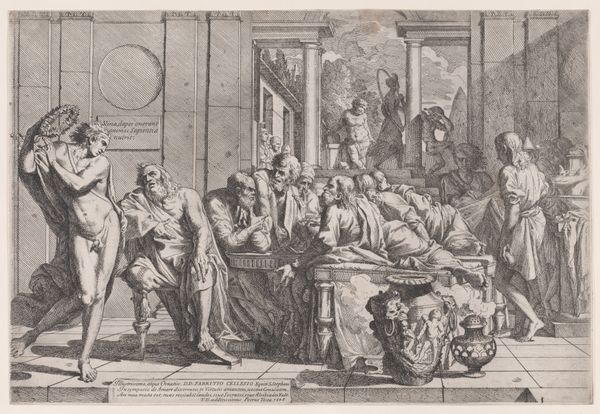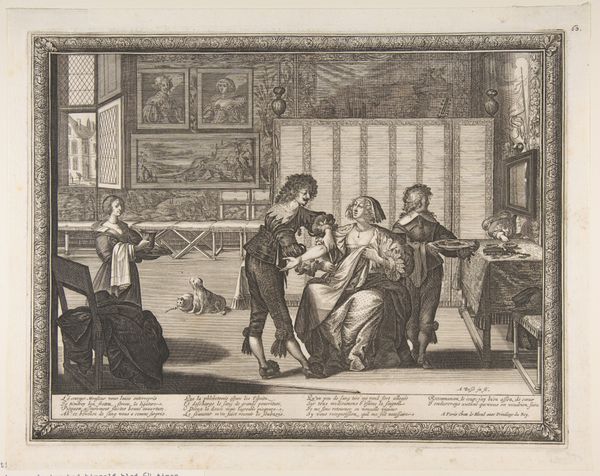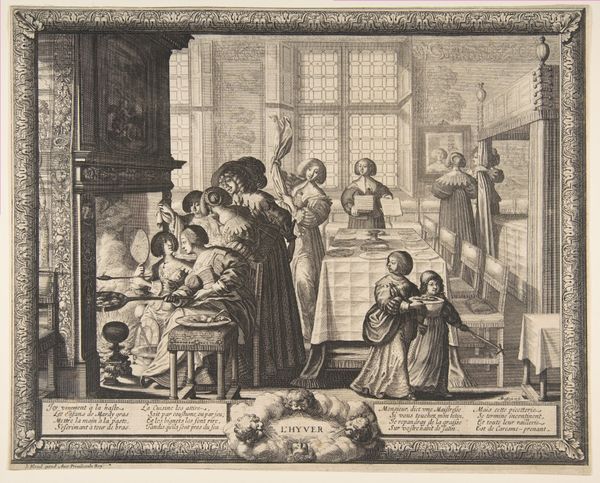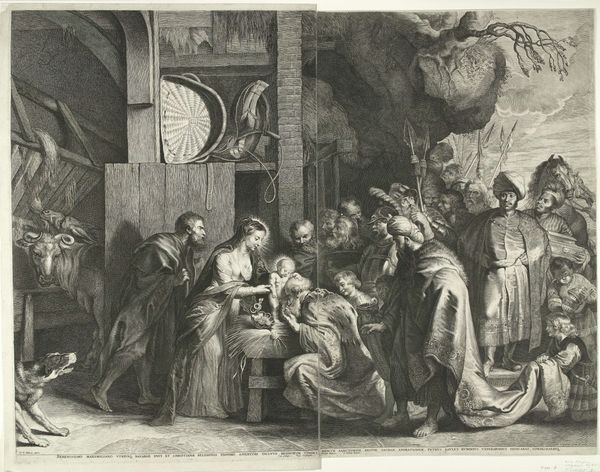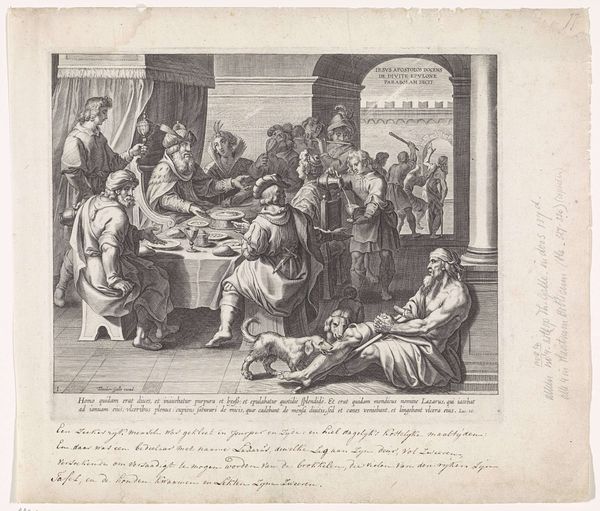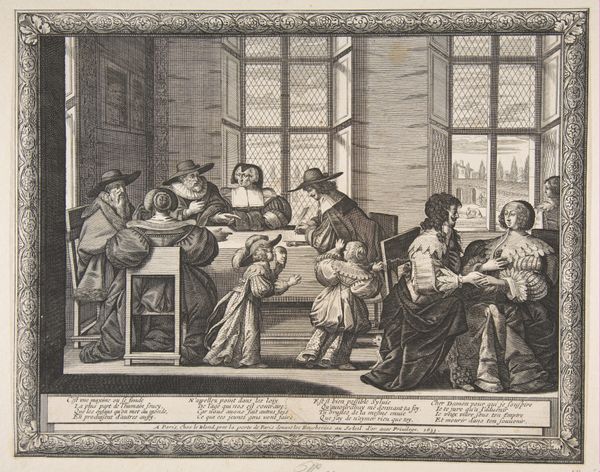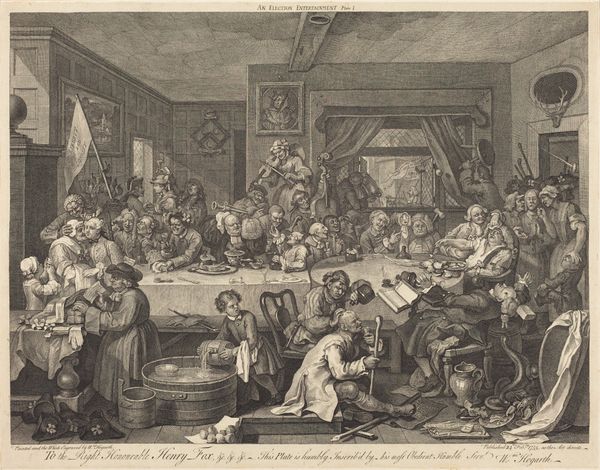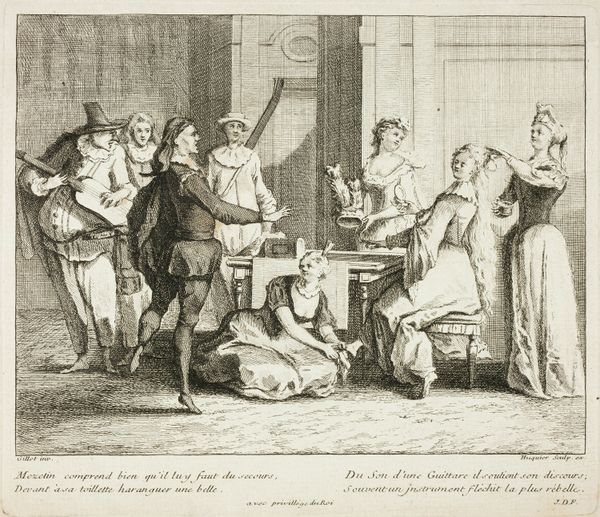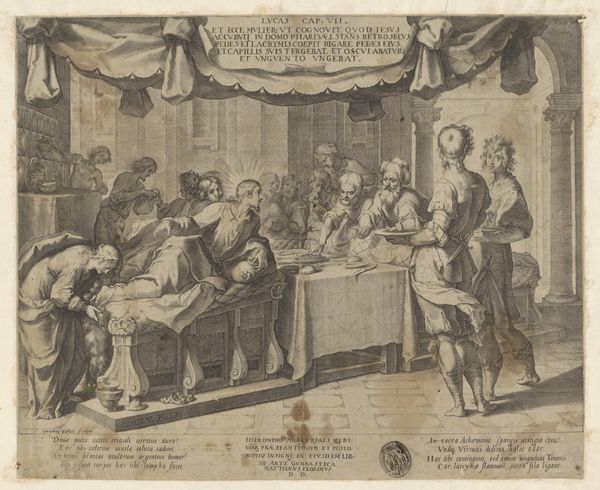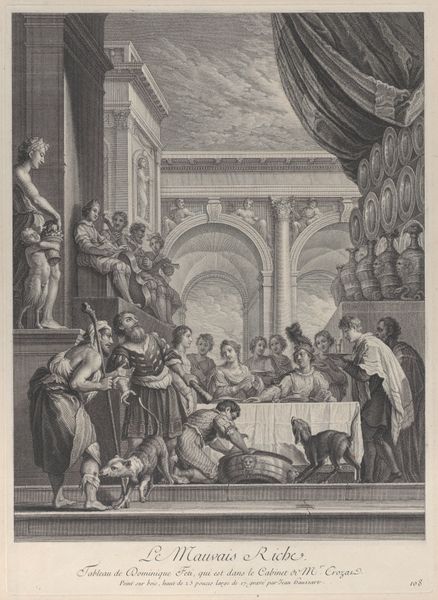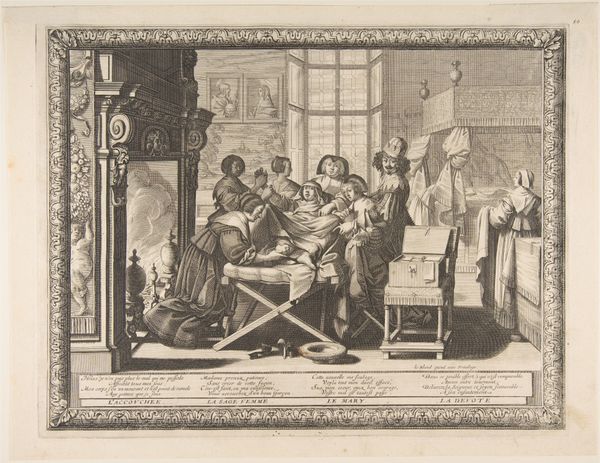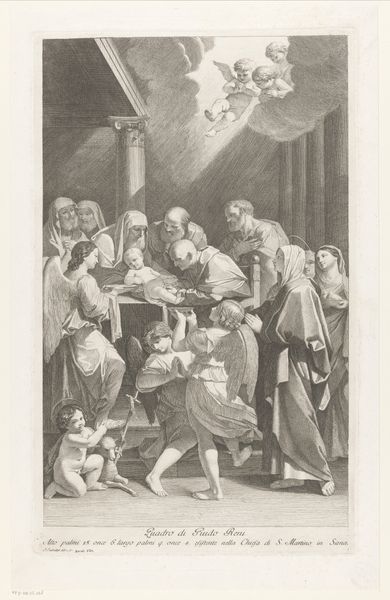
print, etching
#
baroque
# print
#
etching
#
etching
#
figuration
#
history-painting
Dimensions: sheet: 51.8 × 66.2 cm (20 3/8 × 26 1/16 in.) trimmed to platemark mount: 62.4 × 78.6 cm (24 9/16 × 30 15/16 in.)
Copyright: National Gallery of Art: CC0 1.0
Editor: Here we have Jean Dughet’s etching, "Extreme Unction," created around 1650. It depicts a scene of what appears to be last rites, and there is something very performative about the subjects that I find curious. How do you interpret this work? Curator: That's a great observation. Considering this etching through an activist lens, I immediately think about power structures at play within both religious rituals and the social dynamics of 17th-century life. Who has access to comfort, to ritual, to power in this scene, and who is excluded? Do you see any indications of that in the composition itself? Editor: Well, the central figure, seemingly the one receiving the sacrament, is clearly vulnerable, almost prostrate. The people administering the rite seem to be in a position of authority. What strikes me is also that some people in attendance seem more engaged in the process, such as the kneeling figure. Other people seem more removed, simply observing the action. Curator: Exactly. Think about the historical context: the Baroque period. The Catholic Church’s influence was enormous, yet being questioned. Art was often used to reinforce its power, but at the same time, prints such as this made these images accessible. Now, who do you imagine was the target audience for such imagery? What were their own social or political concerns at the time? Editor: Presumably, a wide range of people given the medium. So perhaps it reinforced faith for some, while inviting questions about religious authority for others? Curator: Precisely. Consider also, the figures gendered in the image, and those carrying children. Those on the edges of the scene carry as much information as the activity happening front and centre. These dynamics reflect and influence perceptions of faith, health, death, and how society supports those on the margins. What did you gain from thinking through those various contexts? Editor: I see now how even a seemingly straightforward religious scene can open up conversations about social power and access, which are obviously still relevant today.
Comments
No comments
Be the first to comment and join the conversation on the ultimate creative platform.

